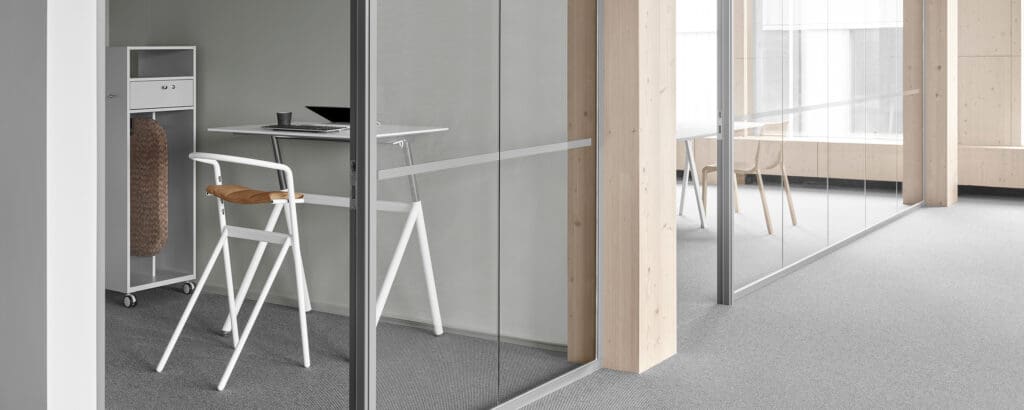The workplaces of the future need to create conditions for sustainable people and a sustainable future. It also means that our new ways of working with teleworking and hybrid workplaces need innovative design.
We need to dare to challenge the status quo.
Recent developments in home working and hybrid workplaces have changed the conditions of our working environment. One example is the increasing sedentary nature of our daily lives, which has several negative consequences for our health. A trend that has been developing for a long time, and not only since the pandemic. For a sustainable future, we need to dare to challenge the status quo. We need to take responsibility to see how our interior design can help motivate healthier choices. Both in the short and long term.
Homework has affected the individual’s working environment
In a study from 2021, the Swedish Work Environment Authority has studied how the increased homework during the pandemic has affected the individual’s work environment. It turns out that there are big differences in conditions. The survey shows that one of the risks clearly identified is that a lack of ergonomic conditions when working at home increases the risk of neck, shoulder and back injuries. There are also concerns about a future ‘burden debt’ that will manifest itself in the future due to more static posture, physical inactivity and poor lighting conditions. You can find the report here.
Create motivation for new habits
So how can we, as workplace designers, use design and innovative furnishings to inspire and motivate more movement and variety both in the office and at home? One example is daring to think in new ways. Take, for example, the design of the traditional chair. Can a chair, whose function is to sit down, be designed to promote movement instead to reduce sedentariness?”
Another aspect is to consider how design and smart furnishings can motivate employees to switch more during the day between standing and sitting. Human beings are naturally programmed to save energy. But today, when we don’t move enough, comfort creates inertia traps that, in the long run, shorten our lifespan and are detrimental to our health. Through the design and layout of the physical space, let’s create motivation to get up and be more active. For a sustainable life with increased well-being and healthy employees.
Materials that make us alive
Even the choice of materials we surround ourselves with has an impact on our well-being. Natural materials not only contribute to a more sustainable and better environment for our planet, but also to our well-being. So-called biophilic design supports humans’ innate connection with nature to promote our health. Choosing natural materials such as wool, cork, recycled wood, etc. contributes to a better environment where we feel better. We are affected by our environment and we have known this for a long time. However, recent advances in brain research provide explanations as to why. According to Isabelle Sjövall, neurodesigner and author of the book “How brain research is revolutionizing the way we live, work and play”, architecture and design help us to be more productive and creative.
Mapping and analysis of conditions for working from home during the coronavirus pandemic.

